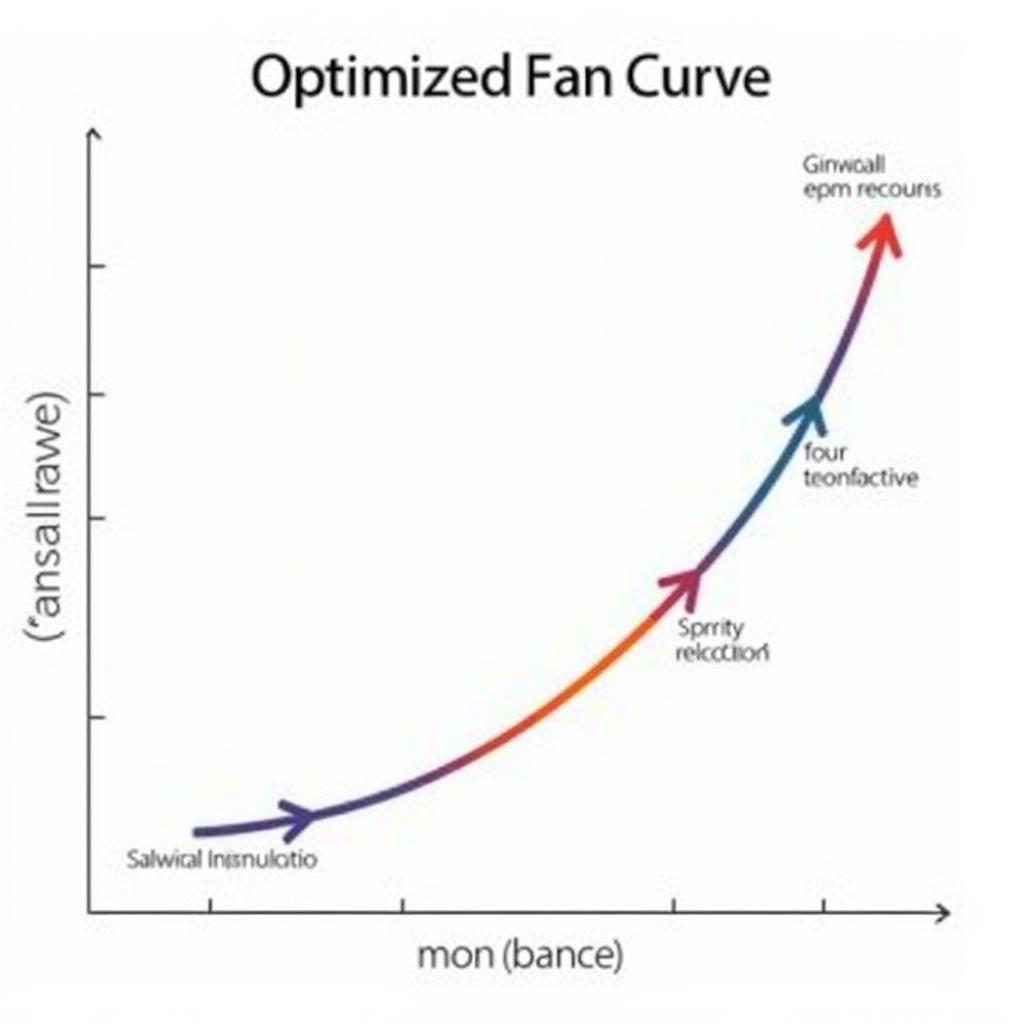Controlling your computer’s fan speed through the BIOS is crucial for maintaining optimal system performance and noise levels. Whether you’re experiencing overheating issues or simply want a quieter computing experience, understanding how to adjust your BIOS fan speed settings can make a big difference. This article will delve into the intricacies of BIOS fan control, providing you with the knowledge and tools to effectively manage your system’s cooling.
Navigating the BIOS and Finding Fan Controls
Accessing the BIOS can vary slightly depending on your motherboard manufacturer. Typically, you’ll need to press a specific key (often Del, F2, or F12) during the initial boot sequence. Once inside the BIOS, navigate to the section related to hardware monitoring or fan control. This section may be labeled “Hardware Monitor,” “PC Health Status,” “Power,” or something similar. Within this section, you’ll find options to control the fan speed.
 Navigating BIOS Fan Control Settings
Navigating BIOS Fan Control Settings
Different Types of Fan Control in BIOS
BIOS fan control offers various modes, allowing you to tailor the cooling performance to your specific needs. Common options include:
- Auto: The BIOS automatically adjusts fan speeds based on system temperature readings. This is generally a good starting point for most users.
- Manual: Gives you full control over the fan speed, allowing you to set specific RPM values. This is ideal for advanced users who want precise control.
- PWM (Pulse Width Modulation): Adjusts fan speed by varying the width of electrical pulses sent to the fan. This allows for finer control and quieter operation.
- DC (Direct Current): Controls fan speed by adjusting the voltage supplied to the fan. This is a less common option in modern systems.
- Profiles: Pre-configured fan curves that balance performance and noise levels. Common profiles include “Silent,” “Performance,” and “Turbo.”
Customizing Fan Curves for Optimal Performance
For advanced users, customizing fan curves provides the ultimate control over cooling performance. A fan curve defines the relationship between system temperature and fan speed. By adjusting the curve, you can fine-tune the fan’s response to temperature changes. For example, you can set the fan to spin slowly at lower temperatures and ramp up quickly as the temperature rises. This allows for quieter operation during normal use while ensuring adequate cooling under heavy load.
Troubleshooting Common Fan Control Issues
Sometimes, you might encounter issues with BIOS fan control. Here are some common problems and solutions:
- Fans not spinning: Check the fan connections and ensure they are properly plugged into the motherboard.
- Fans running at full speed constantly: Verify the fan control settings in the BIOS and try resetting them to default values.
- Loud fan noise: Adjust the fan curve to reduce fan speed at lower temperatures.
The Importance of Proper Fan Control
Proper fan control is essential for maintaining a healthy and stable system. Overheating can lead to performance degradation, system instability, and even hardware damage. By understanding and utilizing the fan control options in your BIOS, you can ensure optimal cooling performance, prolong the lifespan of your components, and enjoy a quieter computing environment.
 Example of an Optimized Fan Curve
Example of an Optimized Fan Curve
In conclusion, BIOS fan speed control offers a valuable tool for managing your system’s cooling. By understanding the various options and techniques discussed in this article, you can optimize your system’s performance, reduce noise levels, and ensure the longevity of your hardware. Mastering BIOS fan control is a crucial step towards building a stable and efficient computer system.
FAQ
-
What is BIOS fan control?
BIOS fan control allows you to adjust the speed of your computer’s fans through the system’s BIOS settings. -
How do I access the BIOS?
You typically access the BIOS by pressing a specific key (Del, F2, or F12) during the initial boot sequence. -
What are the different fan control modes?
Common modes include Auto, Manual, PWM, and DC. -
How can I customize fan curves?
You can customize fan curves within the BIOS fan control settings, adjusting the relationship between temperature and fan speed. -
What should I do if my fans are not spinning?
Check the fan connections and ensure they are properly plugged into the motherboard. -
How can I reduce fan noise?
Adjust the fan curve to lower the fan speed at lower temperatures. -
Why is proper fan control important?
Proper fan control prevents overheating, ensures system stability, and prolongs the lifespan of components.
Scenarios:
-
Scenario 1: Overheating CPU: Check the CPU fan connection and ensure it’s securely attached. Adjust the CPU fan curve in the BIOS to increase the fan speed at higher temperatures.
-
Scenario 2: Loud System Fans: Access the BIOS and adjust the system fan curves to reduce their speed at lower temperatures, prioritizing quieter operation.
-
Scenario 3: Fans Not Responding: Verify the fan control mode in the BIOS. If set to Manual, ensure the fan speed is not set to 0. If using PWM, check the PWM settings.
Further Reading:
For more information on optimizing your PC’s cooling, you can explore our other articles on:
- CPU Cooler Installation Guide
- Choosing the Right Case Fans
Need further assistance? Contact us! Phone: 0903426737, Email: [email protected] or visit us at: Tổ 9, Khu 6, Phường Giếng Đáy, Thành Phố Hạ Long, Giếng Đáy, Hạ Long, Quảng Ninh, Việt Nam. Our customer support team is available 24/7.


